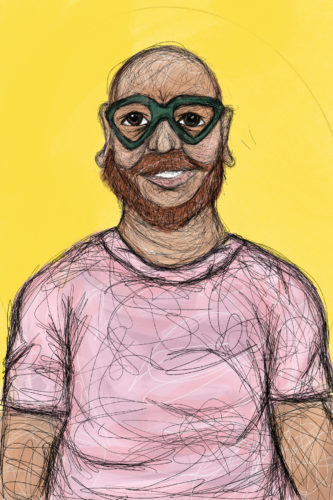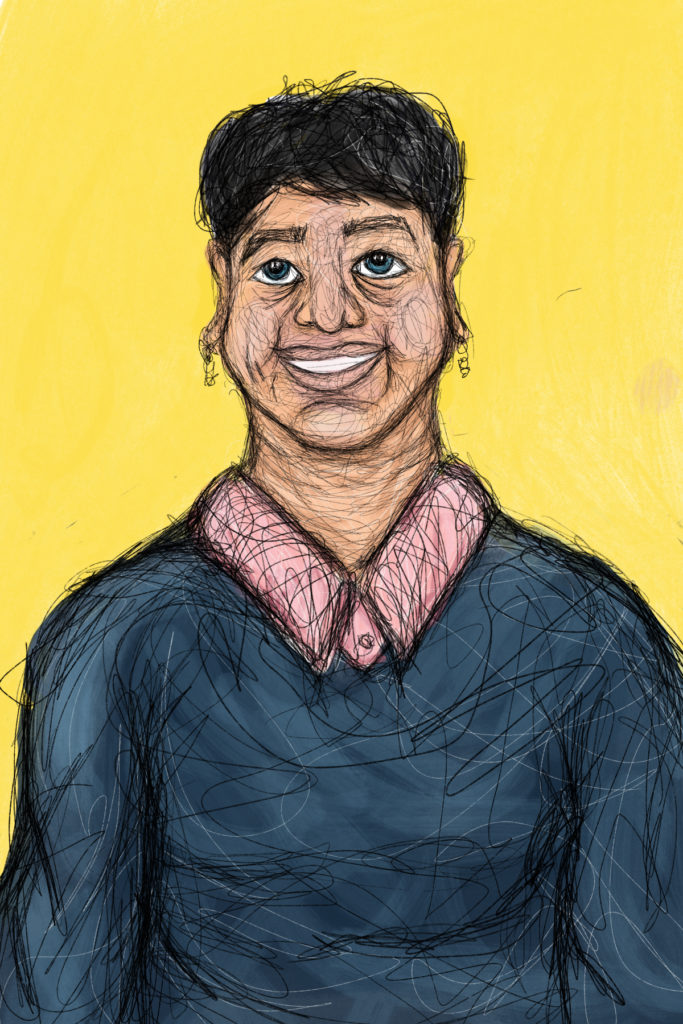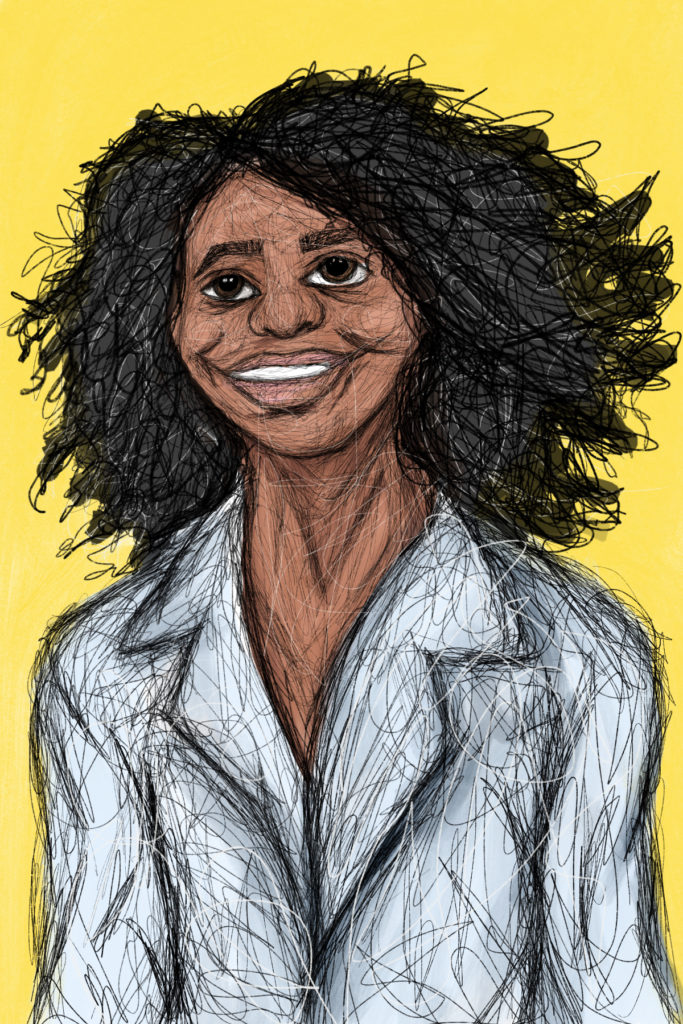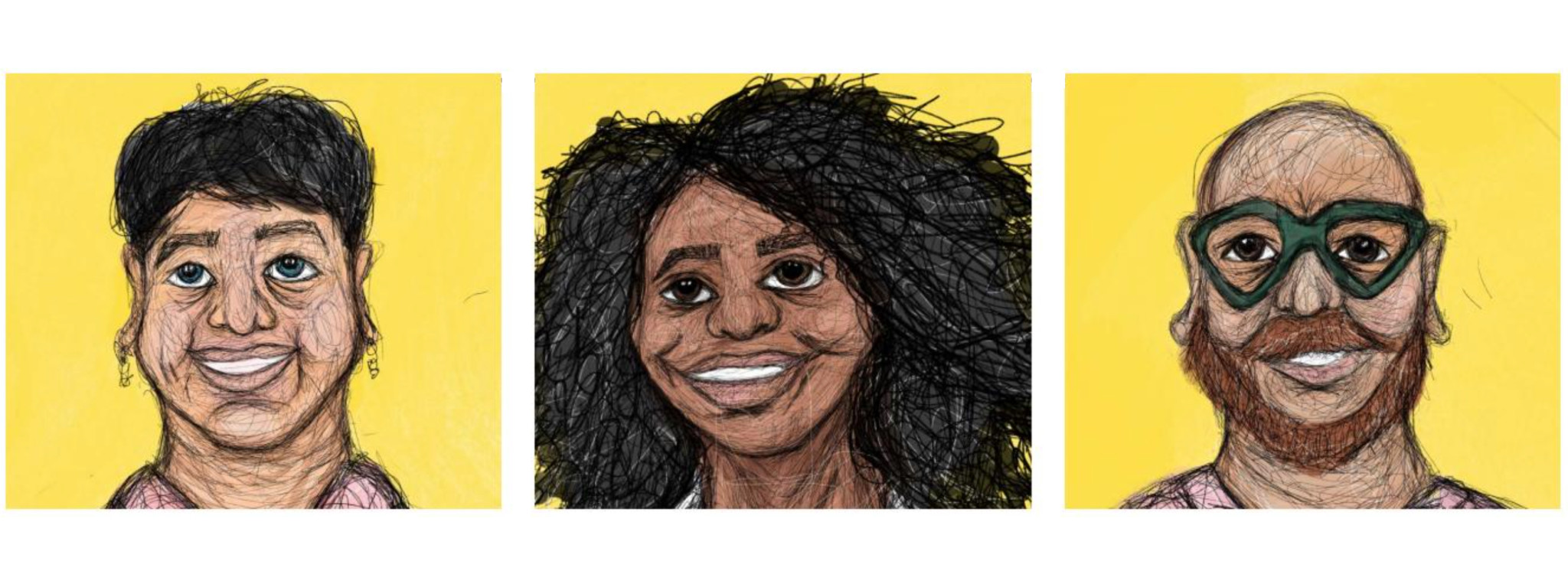When grocery store worker Julian Hendrix first approached Howard Brown Health Center in Hyde Park for vaccine appointments, the response was, “don’t call us, we will call you.”
Started as a volunteer-run organization, Howard Brown Health’s primary care was built with the mission to eliminate the disparities in healthcare experienced by LGBT groups in Chicago, and has been a valuable resource for people like Hendrix in the neighborhood. “The reality is, Howard Brown is an under-resourced clinic serving the general public, and even routine care can be difficult to get, never mind urgent care,” Hendrix said. “Seeking medical care if you are working class is a hassle.”
Since the pandemic started, Howard Brown has expanded its COVID-related services, including testing and vaccinations. However, the supply has struggled to keep up with the demand. When no doses are available for eligible patients who schedule appointments with the clinic, staff contacts these individuals when they receive the supply from the Chicago Department of Public Health (CDPH), according to Chief Operating Officer Ken Griffin.
“We placed requests from CDPH of how much we are requesting, and then CDPH gives us a confirmation of how much we received, which is almost never the amount that we requested,” said Griffin.
Luckily, through his employer Open Produce, an independently owned grocery store, Hendrix was able to receive detailed instructions for vaccine appointments at Walgreens. However, after receiving the first dose, he found out that his appointment for the second dose had not been booked.
Hendrix pointed out that for those without access to primary care as a result of not having healthcare insurance, getting the information about routine care was already hard enough.
Unable to find available appointments online, he ended up calling the Walgreens pharmacy where he received his first dose. “For forty minutes, I literally just plugged in my phone, and I was doing paperwork, so fortunately I could sit on hold for forty minutes,” Hendrix reflected on the time spent on getting an appointment.
He was able to get into the wait list and eventually received his second dose. But the experiences of making multiple phone calls and spending time on appointments with no guarantee have created barriers for many eligible Chicagoans like him.
In the sixty-five thousand-member Facebook Group “Chicago Vaccine Hunters”, numerous posts have risen over complaints about Walgreens’ scheduling issues and the lack of transparency in vaccine availability. For example, the availability of second doses had affected the appointment for first doses. But after young people brought the problem to Walgreens on social media when they attempted to make appointments for their parents older than sixty-five, the only response they received was a request for them to continue checking their app or website.
Now, Walgreens receives vaccinations from the Federal Retail Partnership Program, in addition to doses from the city and the state. However, there was no information from elected or health officials or Walgreens regarding how vaccines outside of the federal program are allocated.
To essential workers, getting the vaccine itself is not the end of the story. At a small grocery store such as where Hendrix works, conversations over side effects have taken place. “We need to see if we can stagger appointments,” said Hendrix, “so that we don’t have a bunch of people out sick because of side effects.” For both doses, Hendrix experienced flu-like symptoms for a few days; among his co-workers, three out of four who received the doses on the same day called in sick immediately the next day.

At Open Produce, workers were able to take sick leave thanks to the support from owner Steven Lucy. “I told everyone ‘get an appointment, if your appointment’s during a shift, we’ll cover it’,” Lucy told the Weekly. “As disruptive as it might be for one person to be out sick one day, the real danger from a business continuity perspective is someone getting COVID and then everyone else potentially being exposed.” For a store that focused on serving the surrounding South Side neighborhood, Lucy believed that ensuring the staff’s safety is equal to ensuring a community’s food access.
But chain grocery stores and family-owned businesses don’t all offer the same flexibility to their employees. At larger workplaces, advocates across the nation are still calling for employers to allow for paid sick leave as an incentive for them to get vaccinated. “I don’t think it’s unreasonable for people to say, ‘I am not so sure [if] I want the vaccine,’” Hendrix explained. “People who have work, people who have childcare responsibilities, especially with children who are not in school, don’t have forty-eight hours to just lie when I was able to lie in bed for two days…the vaccine itself creates barriers to their willingness to get it.”
Hendrix also said that he was having back pains as a result of lying in bed for vaccine side effects. To him, getting vaccinated is voluntarily putting oneself through an uncomfortable period. “I am an American worker. Yeah, I hurt, but I hurt whether I am working or not working, so I might as well go to work because I only have so much paid time off,” he said.
“We are trained to not seek care unless it’s really important,” he continued. “When the medical system suddenly comes to you and be like ‘oh, this [vaccine] is really important, you should do it’, well, how good do you know about it? How good is the quality? Is this actually going to work?”
“Especially in the context of the essential worker conversation, [they say] ‘we want to do this for you, because we need you as productive laborers,” he said. “Yeah, because you exploited us, we are compelled to work, and you are not providing us with the resources that we need to not work.”
Beyond vaccine availability and side effects, people in Black and brown communities in Chicago’s South Side may have long-term distrust of the healthcare system.
On February 19, the vaccination team at Heartland Alliance, the city-contracted healthcare provider at homeless shelters, arrived at the Ujima Village Homeless Youth Shelter in Englewood, the only homeless shelter for youth between eighteen to twenty-four in Chicago’s South Side. None of the youths staying in the shelter then wanted to get vaccinated. Only a third of the staff, including manager of facilities and resources, Anne Holcomb, ended up getting the first dose.
“It’s not just a problem of access,” Holcomb told the Weekly, “it’s as much a part of historical trauma as it is access.”

Ujima Village was opened in 2013 as the third low-threshold youth shelter, which has fewer rules for admission than a regular high-threshold shelter, and thus is easier for high-risk youth who have suffered severe trauma to get in.
Until 2011, homeless youth were not included in Chicago’s Plan to End Homelessness, which means that they were not counted in the official homeless number of the city. That meant there were no beds nor city-funded shelters for these populations, leaving them with no choice but to stay with friends or relatives or spend the night in train stations. Today, almost all youth at Ujima Village are African-American, and so are all of Holcomb’s staff, she said. Holcomb herself has African-American and Native American heritage.
“The youth get up and walk away after two seconds,” Holcomb said about Zoom informational sessions about the vaccine. “They are not interested in some white talking head wearing a white coat, telling them this clinical stuff about how the vaccination works. That is not going to do anything about their fears or their resistance, or even their feelings of being invincible, because they are young, and they are tough street kids.”
The Weekly’s open-source Twitter bot showed that predominantly Black and Latinx ZIP codes, while experiencing the highest fatality rate during the pandemic, continued to be the lowest complete vaccinated areas in Chicago. IDPH data showed that, as of March 15, sixty-nine percent of the statewide vaccinated population are white, compared to eight percent Black.
Former President Donald Trump’s administration rhetoric of “Operation Warp Speed”, which designated a national vaccine rollout program at an accelerated speed and mass quantity, spurred skeptics and fears on top of existing distrust of government institutions. “People are very wary of the speed that this came to the market,” said Holcomb, “the language and the marketing of that whole thing sent alarm bells, and exacerbated the historical trauma they already had, and their cultural reluctance and wariness of the medical industry.”
Holcomb was in elementary school when Rubella (German Measles) vaccines rolled out, and she received the vaccine during its final stage of clinical trial. One year later, she got German Measles, and so did almost everyone in her school. Looking at the COVID-19 vaccine today, she expressed concerns over a vaccine that had taken less than a year to come about, in addition to the discomfort she faced when approaching the medical system as a person of color.
Even when homeless shelters are listed as one of the eligible groups during Phase 1b in Chicago, the treatment that homeless youth experienced had long lasting impacts. To Holcomb, Ujima Village was located “in a desert of every kind”: a place with few grocery stores, social services, job opportunities, and city services. During the snowstorm in early February, the residents in the surrounding areas of the youth shelter and the youth themselves had to dig out the street from snow, because the snow plows never came to the area, and 2021 was not a unique experience.
“If you are a person living in poverty, whether homeless or not, and you don’t have a bus card, how are you going to get to the clinic? How are you even going to get to Walgreens?” Holcomb asked. “It’s not just an issue of medicine, it’s an issue of we have some third world countries in the middle of our country.”
For long, low-income communities of color have been lost in the equation of the healthcare system. “When you are used to living in that situation, that’s what you expect, and you don’t trust anything that’s different, either. It’s like ‘oh, they are gonna come and bring us a vaccine when they don’t plow our streets, they don’t do anything about the jobs, they don’t do anything about our social services?’… it might not be the most trustworthy.”
When asked about what healthcare workers can do about the disparity in vaccine access within communities of color, Ameera Haamid, a physician and frontline worker at John H. Stroger Jr. Hospital, told the Weekly, “when we are relying so heavily on virtual platforms to register people, we end up missing the most marginalized in society, so we need a better way to get these vaccines into the community physically or with one-on-one visits, or putting mobile stations within communities that we can use so that the community doesn’t have to fight through another barrier to get to us.”
Haamid received her first dose of vaccination at John H. Stroger Hospital in December and second dose in January. Currently, the hospital is administering vaccinations to eligible community members during Phase 1b through the Emergency Department. According to Haamid, when making appointments, some patients are able to receive same-day vaccines, and others have to wait. Haamid encouraged community members to contact their primary care provider or call the hotline for appointments.

As vaccines were distributed in the city, Haamid said healthcare facilities saw patient volume gradually returning back to pre-COVID times. But healthcare providers such as Haamid admitted that a large part of the population are still scared or doubtful of the vaccination. “We’ve got to listen to the community and also let people of color have a seat at the table and actually lead the charge of vaccinating people within their community, because no one understands what the community needs other than another member that’s from the same group,” she said.
Holcomb, looking at a broad, prolonged history between the marginalized group and the healthcare system, emphasized the urgent needs of change in how healthcare providers approach their target communities. “[They need to] engage with them on a level that not only is clinical and talks about the facts, but also gets down deep and deals with the historical trauma and the fears, which are not [based on] facts. Those are emotional.”
“If the public health really wants to vaccinate people who have been left out in the cold throughout American history, as far as healthcare is concerned, they are gonna have to learn to do business a little bit differently.”
Yiwen Lu is a reporter for the Weekly who primarily covers politics. She last wrote about downgrades at Provident Hospital.

